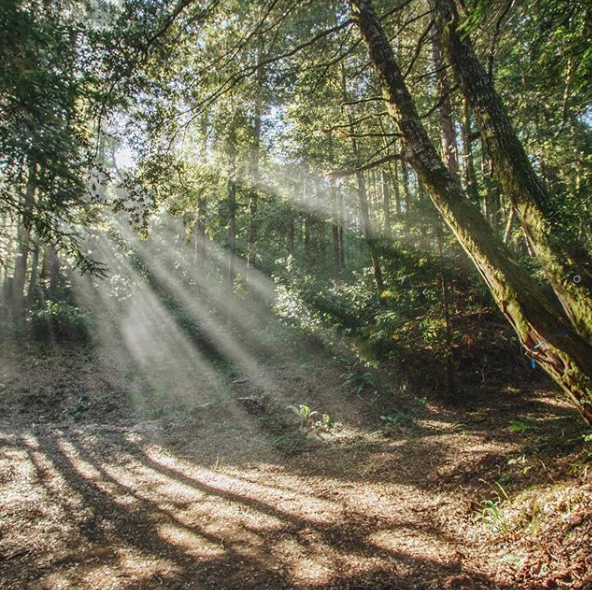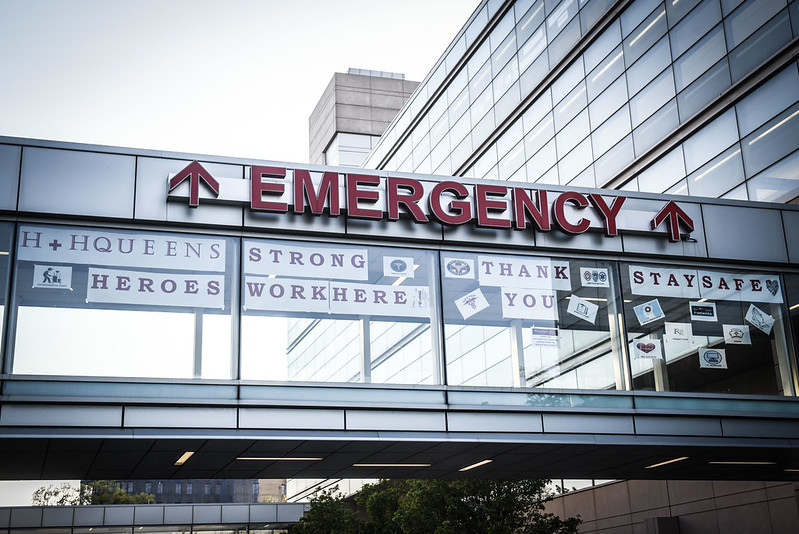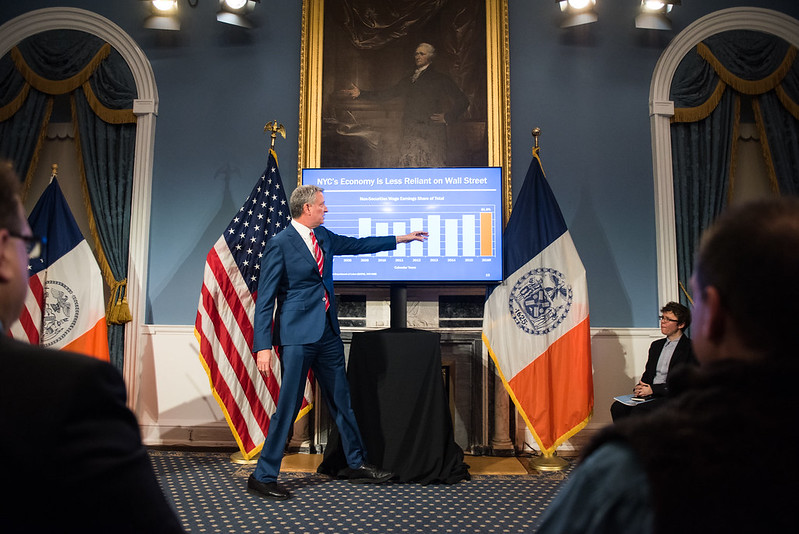As Coronavirus Overwhelms Funeral Homes, New York Must Act to Allow Alternatives to Traditional Burials

(photo: betterplaceforests via Instragram)
Across New York City, communities of color have been disproportionately hurt by COVID-19. Along with my colleagues in the New York State Black, Puerto Rican, Hispanic, and Asian Legislative Caucus (NYSBPRHA), I have heard from countless New Yorkers the numerous real and painful struggles they are dealing with as a result of the pandemic. Many are frontline and essential workers who continue to do their jobs day after day, risking their lives in order to help others. Per one recent report by the New York City Comptroller, 53% of health-care workers are immigrants and 70% of health-care workers are people of color.
For communities who have given and lost so much already, what has been most painful is the inability to say goodbye to their loved ones. Hospitals are closed to visitors to control the outbreak, phone calls are almost impossible for critically ill patients, and funerals and memorial services have frequently been cancelled or delayed indefinitely.
As cremations have more than doubled in some parts of the country, many places are putting a cap on how many funerals and burials they can do. Meanwhile, those who have lost their jobs are forced to make tough decisions on whether or not to purchase a casket and a burial plot or feed their families. As families continue to grapple with these decisions, more and more people are dying every day, leaving hospitals with hundreds of bodies and funeral directors working overtime.
To address these issues, we need to open our state up to new ways of memorializing our loved ones.
To that end, I recently began working with Better Place Forests, which preserves forests and provides a more affordable, more sustainable alternative for people who choose cremation, enabling families to choose a final resting place beneath a tree while abiding by best regional practices that benefit local economies and the environment.
To help the grieving families of first responders, Better Place recently launched the Memorial Trees for Heroes initiative to honor those who have bravely taken on risk in the face of the COVID-19 pandemic to help others. As the national average cost of a traditional burial is $8,755, according to the National Funeral Directors Association, this program will be an incredible help for the families of frontline workers who have passed away from COVID-19.
All health-care workers, caregivers in nursing homes and hospices, first responders, public transit workers, delivery workers, and others who have not had the luxury of working from home, but rather had to work to keep our communities running deserve access to programs like this one.
But right now, programs like the Memorial Trees for Heroes initiative that could provide comfort to grieving families have trouble operating in the state due to a one-size-fits-all approach that prevents cost-effective options for New Yorkers. I, along with my colleagues in the NYSBPRHA, believe the state must act now to provide more options and assistance to the thousands of COVID-19 victims’ families. Doctors, nurses and other essential frontline workers who sacrificed their life to help others deserve to have a beautiful final resting place where their loved ones can honor their memory. We must ensure the values these fallen heroes stood for in life and in death live on to serve as a testament to the greatness of this city and our communities.
***
Assemblymember Tremaine S. Wright represents parts of Brooklyn and is Chair of the New York State Black, Puerto Rican, Hispanic & Asian Legislative Caucus. On Twitter @tremaine4ny.
***
Have an op-ed idea or submission for Gotham Gazette? Email This email address is being protected from spambots. You need JavaScript enabled to view it.
Lessons from Two Plagues

(photo: Michael Appleton/Mayoral Photography Office)
My career in public health and health care is bookended by plagues. I graduated from college in the 1980s and moved to the West Coast. It was a time of freedom and fun and I was living what felt then like an “adult” life; I had a job, my own apartment, a car, a dog, a boyfriend. Life was good.
But something dark and sad was hovering around me at the same time. The HIV/AIDS pandemic was in full effect. By 1990, more than 120,000 Americans had died of the mysterious disease. I knew people who were sick or dead. I had to get involved.
I started volunteering with the Northwest AIDS Foundation doing outreach and education. It was the first time I’d heard of the field of public health. I didn’t really know what it was, but the smart people and leaders around me had studied it. I’d always been interested in politics and it seemed like the place where politics intersected with medicine, so I was hooked. Off to grad school I went and I’ve been working to improve health care ever since.
Thirty years later, we find ourselves in the midst of another pandemic with echoes of the HIV/AIDS crisis:
Fear. The early days of HIV/AIDS were terrifying. Did you already have it? Would you get it? Would you die? What caused it? Today, every sneeze or cough, many from seasonal allergies, causes worry. It’s scary to touch anything — even hug our own families — or go to the supermarket.
No vaccine. In 1984, the Health and Human Services Secretary announced the discovery of the virus that causes AIDS and predicted a vaccine would be available by 1986. Experts are similarly forecasting it will be a year or two until we have an effective COVID-19 vaccine. It’s 2020, and there is still no vaccine for HIV.
Stigma. Would things have been different in the U.S. had HIV/AIDS not mainly affected gay men, people of color, and IV-drug users in the early days? Without question, discrimination and hate played a big role in the slow response to that pandemic. COVID-19 has prompted a resurgence of racism and xenophobia, especially against Asian-Americans. Early on, AIDS was called the “gay cancer.” President Trump often calls COVID-19 the “Chinese virus.”
Government failures. The government has blood on its hands for both AIDS and COVID-19 deaths. The first federal government report on AIDS came out in 1981. It infamously took four years and 12,000 American deaths before President Reagan even uttered the word “AIDS.” The federal government’s response to COVID-19 has been slow and inept. The list of failures includes a lack of testing capacity; inadequate protective equipment and ventilator supplies; failures to contact trace and isolate exposed people; and mixed and confusing public messaging.
Other similarities, however, give me hope. Then and now, we’ve witnessed acts of bravery and courage. People are putting their own lives on the line to save others. Scientists, doctors, nurses, and other healthcare workers have demanded answers and fought for resources. They’ve provided care when they could and comfort when that was all that was possible.
Medicine and science have advanced. HIV/AIDS is no longer an automatic death sentence. We don’t have a cure or a vaccine, but we have treatments that can make AIDS a manageable chronic disease and even prevent transmission. Obstacles to accessing and affording those medications remain, but at least the treatments exist. And today, some of the smartest minds are working on vaccines and treatments for COVID-19.
AIDS forced marginalized people to unify and fight for their lives. As a result, we saw greater visibility, acceptance, and enhanced rights for LGBT people. The race and class differences so glaringly on display with COVID-19 should force us to again confront structural inequities and repair them.
I see hope and humanity in the many Americans showing genuine empathy and caring for others in the community: sewing and donating masks to protect essential workers, delivering groceries to elderly neighbors, supporting local businesses, and more.
Our inadequate response to the HIV/AIDS crisis is a shameful stain on our nation’s history. But we got through the peak of the AIDS crisis — not unscathed or unchanged, but we got through it. We’ll get through this, too.
Already, COVID-19 has killed more than 22,000 people in New York and more than 328,000 around the globe. As with the HIV/AIDS pandemic, things will get worse before they get better. It’s hard to know when and how our current crisis will end and what the future will look like. But we do know what safely getting to a new normal will require: widespread testing, capacity for effective contact tracing, and action that’s guided by facts and science.
As COVID-19 continues to plague us, we can and we must do better. As the old AIDS rallying cry went, “silence equals death, action equals life.”
***
David Sandman is President and CEO of the New York State Health Foundation. On Twitter @DavidSandman1 & @nys_health.
***
Have an op-ed idea or submission for Gotham Gazette? Email This email address is being protected from spambots. You need JavaScript enabled to view it.
No to Austerity, Yes to Efficiency and Fairness: Getting Our Budget Priorities Straight for a Strong Post-COVID New York

Major budget questions loom as coronavirus takes its toll (photo: Edwin J. Torres/ Mayor's Office)
As we work to show COVID the door, tough budget decisions are ahead. Governments at every level are grappling with the unprecedented toll this pandemic has had on the economy.
COVID has laid bare structural inequities too stark to ignore. While some work comfortably from home, others put themselves in danger on the front lines. While some flee to the Hamptons, others pass the virus between family members in cramped New York City apartments.
These choices become even more stark when we take a cold, hard look at post-coronavirus state and municipal budgets. New York State is facing a $10-$15 billion budget deficit. New York City projects a $7.4 billion loss in tax revenue.
Where should we go to fill the budget gaps?
Our executives have given us hints of what they want to do. We are told that painful cuts are necessary, that sacrifices must be made.
Mayor de Blasio already took a scythe to just about every program with the prefix summer including the Summer Youth Employment Program, a program that provides summer jobs for at-risk teenagers. He has also cut services that affect our daily lives, like trash pickup days and electronics recycling.
Governor Cuomo pushed to cut health-care funding in this year’s budget, even as our public hospitals struggle to treat an influx of coronavirus patients, and we’re told to wait with baited breath for more cuts to come.
The mayor continually refuses to lessen property tax burdens on low- and middle-class homeowners and renters, many of whom are bearing the brunt of COVID’s pain, while the governor has refused to consider revenue raisers on ultra-millionaires, billionaires, and large corporations, many of whom are left unaffected by the virus’ scourge.
We believe these are misguided decisions. We reject the choice between austerity budgeting and a tax burden shouldered by low- and middle-income New Yorkers.
Instead, we need an honest assessment of how we can raise revenues by looking to those who can afford to pay their fair share.
The very wealthiest New Yorkers will not face eviction or foreclosure, like so many other New Yorkers. They will not struggle to access unemployment benefits. They will wait out the storm in second homes.
As a matter of basic fairness, these individuals less impacted by COVID can and should contribute more.
We should also look at corporations that have profited specifically because of this pandemic. These large corporations can and should pay more to rebuild our economy when this is all over.
Passing austerity budgets that cut essential services will only doubly punish our frontline workers and those struggling to make ends meet during and after this pandemic. After all, our essential workers — EMS, police, firefighters, Parks Department employees, grocery store workers, transit workers, nurses, doctors, and so many others — are about 40% people of color; 75% of whom live in the so-called outer boroughs. One-third of our frontline workers are from low-income households.
An austerity approach will inevitably push our city deeper into recession and make it even harder to dig out of this financial hole.
In addition to revenue raisers on those who can afford it, we need substantial federal funds and can borrow up to 20% of the budget from the Federal Reserve’s COVID-19 emergency lending program.
Finally, we also must take a hard look at the waste in our budgets. The New York City budget has ballooned by $20 billion in the last six years alone. The state budget is certainly not immune to wasteful spending either.
Instead of making cuts to hospitals, CUNY, and summer employment, we need to look at the programs with unproven impact, the spending that doesn’t go directly into communities.
For example, procurement contracts make up nearly 40% of the city budget’s recent growth. These contracts should be reviewed and scrapped or renegotiated as necessary. In 2018, the Independent Budget Office suggested that simply switching to open source software could save the city $30 million per year.
For every wasteful or unproven program we know about, there may be many more that we haven’t yet identified, in part for lack of looking close enough. These budgets need to be scrutinized and every revenue-raising option must be explored before we cut a single dollar to any program that working-class New Yorkers rely on.
This pandemic has put us through the wringer in the most brutal way. All of us are reflecting on what kind of society we want to be when we emerge from this dark time.
Our post-COVID government budgets will demonstrate our values. We stand for a New York City and State that cares for its people and lifts up those who need it most.
***
State Senator Andrew Gounardes and City Council Member Justin Brannan represent parts of Brooklyn. On Twitter @agounardes & @JustinBrannan.
***
Have an op-ed idea or submission for Gotham Gazette? Email This email address is being protected from spambots. You need JavaScript enabled to view it.




